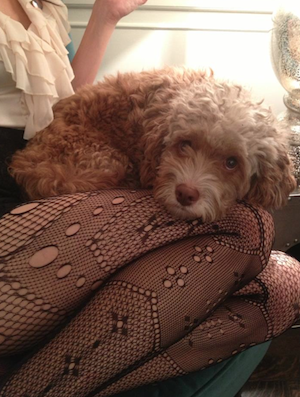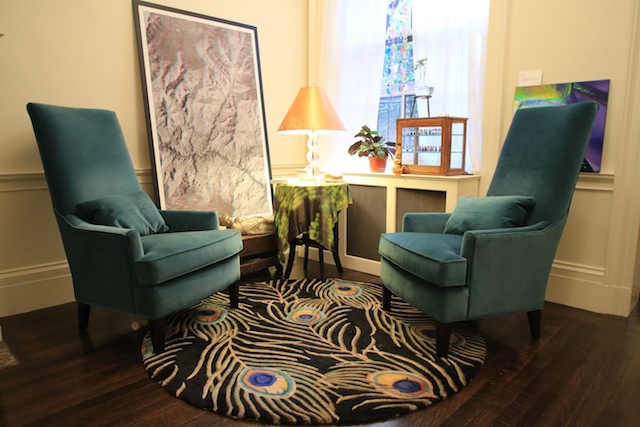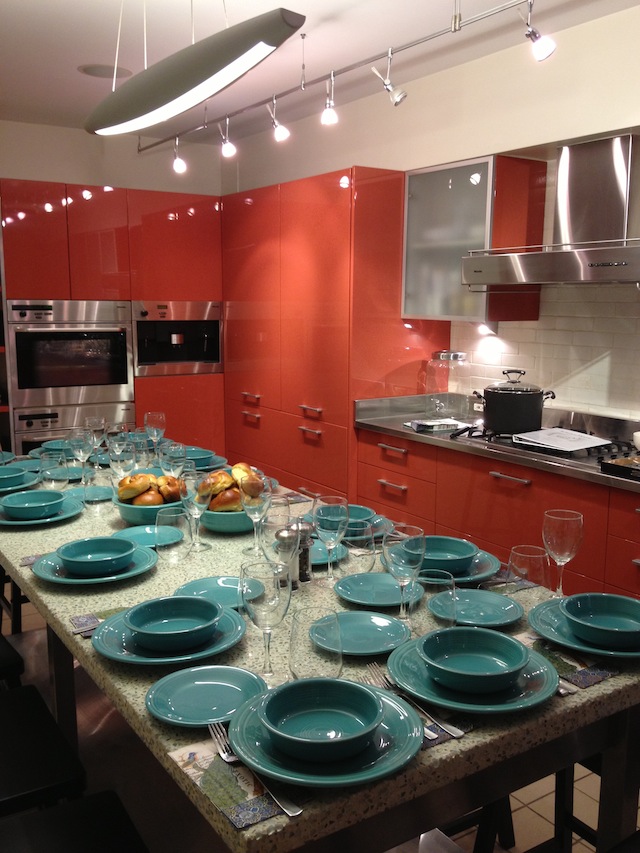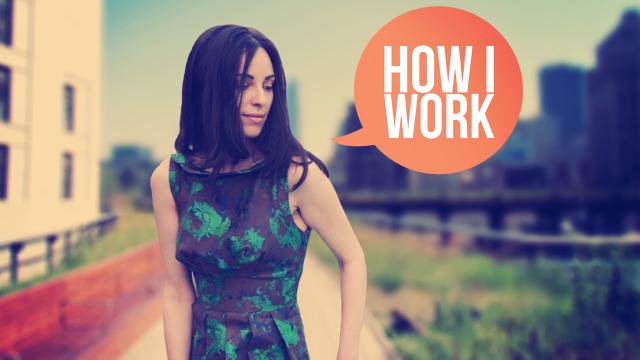Prepare to have serious workspace envy. As Executive Vice President of Science House, a creative consultancy in New York City, Rita J. King works out of a seven-storey townhouse originally built by Abraham Lincoln’s son.
Science House serves as a place to spark ideas (teams can even write on the walls in the “Imagination Room“) and connect the worlds of science and business. It also funds science and maths education projects for kids. Prior to Science House, Rita was a futurist at the National Institute of Aerospace, and she’s a frequent speaker and writer on the topics of imagination and creative collaboration. We caught up with the very busy Ms King to find out what apps, gadgets and inspirations keep her going.
Location: New York, NY
Current gig: EVP for Business Development, Science House
Current mobile device: iPhone
Current computer: MacBook Pro, iPad, ChromeBook for writing
One word that best describes how you work: Imaginatively
What apps/software/tools can’t you live without?

I love the Exoplanet app. I like to know when a new hot Jupiter or an earthlike planet in the “goldilocks zone” has been discovered. For terrestrial sky info, I love Dark Sky, because it uses real-time data about the weather for accurate rain predictions. I love working simultaneously with other people on documents in Google Drive. I love the Kindle app. I’m currently working on a series of notebooks about different aspects of imagination, and I carry them with me.
My superdog, Annie (pictured at right), loves to manage projects and guard me. My secret weapon is my husband James Jorasch, an inventor and founder of Science House. Twitter is always up in the background behind whatever I’m working on, and has been since 2007. I’m a LinkedIn INfluencer, and I love being part of the program and platform as it grows.
What’s your best time-saving trick?
When I get an email that I need to respond to, I add it immediately to my to-do list with a note about whatever action item is associated with the correspondence. Throughout the day, I try to respond immediately to clients and collaborators whenever I can to keep things moving and avoid people getting frustrated by waiting for a response before they can take action. Also, I keep a list of people I’m expecting to hear back from and when I should contact them again if I don’t hear back by a certain date.
What’s your favourite to-do list manager?
I keep my list as a note on my iPhone. Every night, I make sure that the things I need to get done the next day are listed in the order in which I need to do them at the top of the note. This includes everything — no matter how large or small — personal and professional. I keep a list of my writing assignments and the interviews I need to do; I keep a list of the interviews and talks I have coming up and the questions I need to think about; I keep a list of the events we have coming up at Science House so I can track every aspect of producing and directing them. James writes on sticky notes and keeps them on his desk. Every couple of days we consolidate the lists to make sure everything keeps levelling up smoothly at Science House.
At the bottom of the document, I keep notes on books, ideas, art, articles, presentations and other things I’ve heard about that I need to look into, watch or explore. Sometimes this includes itineraries for trips, visits with friends, things I want to remember, and even outlines for wild ideas that will always remain in the realm of fantasy. It takes a long time to scroll to the end of my list, but it doesn’t matter because the important stuff is always at the top.
What’s your workspace like?
Science House is headquartered in a seven-storey townhouse in Manhattan. It was originally built by Abraham Lincoln’s son for his daughters, and it has all the original woodwork and detail. The history of the building is juxtaposed with our modern design as a cathedral of the imagination. We have a science art collection. I move around depending on the type of work I need to get done. We brainstorm in the Imagination Room, where we write on the walls. James and I live at Science House. When we’re collaborating, I work in his office. I carry a stack of laptops, my phone, and notebooks around with me. My office is completely mobile.
My creative studio at Science House, where I spend most of my time, has a peacock blue chaise lounge and matching high-backed chairs. I have a digital microscope that I use to image butterfly wings. I print the images on silk to make scarves. I have lots of science and art books. On my small glass desk is a stack of index cards with notes from all the conversations I’ve recently had with clients and collaborators. Once a day I go through the whole stack and incorporate the notes into my Google documents. The next day the cards start to pile up again.

Pictured above: Rita’s creative studio.
Besides your phone and computer, what gadget can’t you live without?
My slide viewer. I make Mystery Jars, which are tiny jars filled with objects and fragments from all over the world. I’m just about to launch a Kickstarter for a series of Mystery Jars called Time in a Bottle. I’ve been ordering collections of vintage slides from all over the world — Iraq, Greece, Europe during World War II, Hong Kong in the 1950’s, everywhere. The slide viewer is my portal into the world — a little time machine that takes my breath away with illuminated glimpses of things that happened on this little planet that we share.
What everyday thing are you better at than anyone else?
I’m very good at what I call the tedium of creativity. I love the exhilaration of making connections and getting new ideas, but mostly I really love following through on all the tedious little steps that take an idea from imagination to reality, because that’s the only way to breathe life into a concept. That means figuring out quickly which ideas need to be discarded — even though this is sometimes painful — and which ones are worth developing. Time is finite and imagination is infinite, so it’s a constant balancing act.
What do you listen to while you work?
When I’m writing, I prefer ambient sound. If I’m in a café in NYC or a town square in Spain or a hotel in Doha, that means clattering cups, a wedding procession, the call to prayer or whatever happens to be going on around me. I like the sounds of life and the way that rhythm works its way into the cadence of sentences and ideas. Silence is never absolute. There’s always the song of a bird or the white noise of an engine somewhere. When I’m taking a break I love to listen to music. My taste in music shifts depending on my mood and what I’m working on.
What are you currently reading?
There are several books that I read again and again over the years to make sure they keep getting woven into my life. Flow by Mihaly Czikszentmihalyi is one of them. Man’s Search for Himself by Rollo May is another. Right now I’m also reading Mind, Brain and the Quantum by Michael Lockwood and Christine Comaford’s Smart Tribes: How Teams Become Brilliant Together. I read Scientific American and New Scientist and, every Sunday, the magnificent Brain Pickings newsletter.
Are you more of an introvert or an extrovert?
I’m very much both. When I was younger, the introvert beat out the extrovert. I just wanted to read and write. I’m a strategist on the future of work, collaboration, and company culture, which requires me to travel and be with people all around the world. I love the energy of being with people. We also frequently host events at Science House, including brainstorming sessions and customised creative experiences for executive team building. Part of what I love about consulting on the development of collaborative culture stems from being an introvert and extrovert at the same time. I understand both sides so I’m able to help groups find strategies that work for maximizing interactions, and at the same time, create space to work alone and focus.

Pictured above: The Science House kitchen.
What’s your sleep routine like?
For most of my life I was a night owl. In addition to whatever I was working on, I always had a novel-in-progress. I finally gave up my solitary late night habit. I thought it would make me sad to let it go, but it’s been liberating to go to sleep at a normal hour and not have a virtual reality running in my head at all times, with invented storylines and interconnected, fictitious characters who need details to make them come to life. My father got me started writing novels when I was a kid and he published one. I kept at it with extreme dedication for a long time, and I loved every minute of it. Now, instead of writing manuscripts for novels until 2 am on top of everything else, I try to be in bed by midnight. I like to drift off and sleep for at least eight hours.
Fill in the blank. I’d love to see ________ answer these same questions.
John Hodgman.
What’s the best advice you’ve ever received?
To improvise and think of life itself as an art project.
We’ve asked a handful of heroes, experts and flat-out productive people to share their shortcuts, workspaces and routines. Every week we’ll feature a new guest and the gadgets, apps, tips and tricks that keep them going. Want to suggest someone we should feature or questions we should ask? Let us know.

Comments